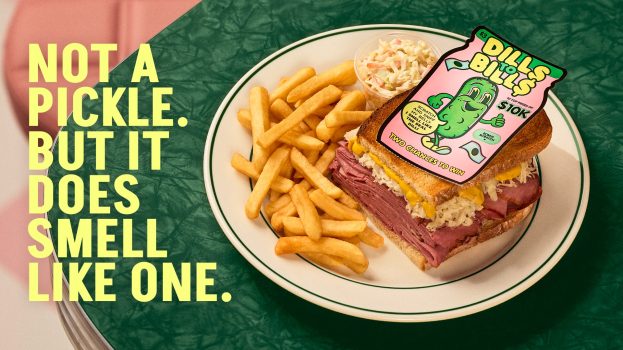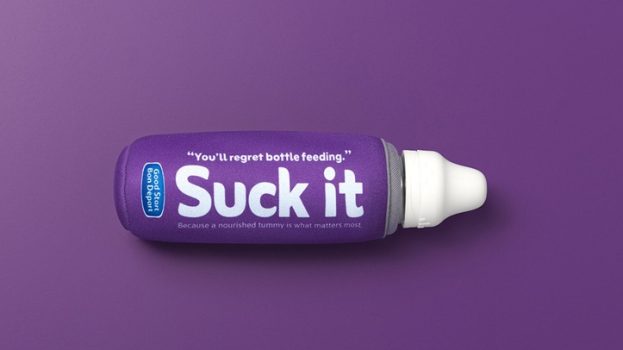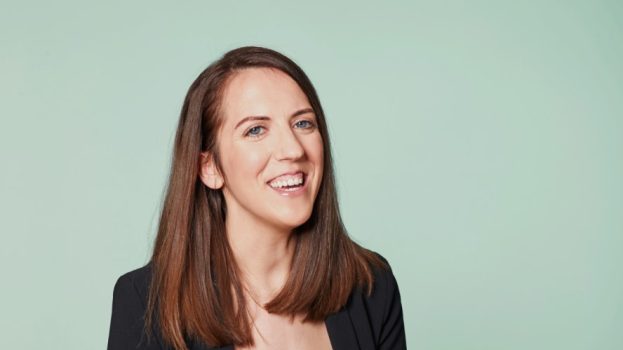Whether you watch hockey, football or golf, it’s an image you’re probably familiar with: the bright orange Gatorade cooler on the sidelines, providing hydration for sweaty players and the occasional full-body drenching for their coaches.
Designed to replace the electrolytes lost during athletic activity, Gatorade (a PepsiCo brand) created the sports-beverage category with its 1965 launch, and became an iconic part of pro sports mythology soon after. Although it still controls 70% of the category, competitors like Coca-Cola’s Powerade (launched in 1988) have meant that Gatorade needs to keep on top of its game, both in terms of product innovation and marketing.
In 2009, Gatorade freshened up the business by rebranding as G, adding a new roster of spokes-athletes who shared their connections to the brand in a campaign celebrating their “G Moments.” Recent efforts such as the “No Small Victories” campaign have championed the low-cal G2, first introduced in 2008.
The campaign reminded calorie-conscious recreational athletes that Gatorade had a product for them too, while drawing on the insight that when you’re playing your best, even rec athletes feel like pros.
But this April Gatorade is introducing Canada to what may be its biggest innovation yet: the G Series. It’s a three-step line of products, each sold separately: Prime (a concentrated blend of carbs and B vitamins to be consumed just before athletic activity), Perform (either original Gatorade or the low-cal G2 version, to be consumed during activity) and Recover (a protein- and carb-based post-exercise recovery drink).
The marketer behind the big launch is Julie Raheja-Perera, who spent the past year as PepsiCo’s marketing director for hydration but, at press time, had just been promoted to senior director, portfolio activation and field marketing.
Raheja-Perera explains the impetus behind the G Series: “We collaborated with the scientists in the Gatorade Sports Science Institute (GSSI) and did consumer research with over 10,000 athletes, and we found that there was a real need for sports nutrition not only when people are doing athletic activity but also before and after.”
Like regular Gatorade, G Series products will be sold at most convenience, gas and drug stores in Canada. Another line, G Series Pro – which has a higher carb count and more sodium and potassium – will be sold in specialty athletic stores.
The plan is to shift Gatorade from a hydration brand to a sports nutrition brand. “The G Series is going to be a long-term innovation platform for developing products for before, during and after athletic activity,” Raheja-Perera says.
The G Series launched in the U.S. last spring, and while its Canadian kickoff is still a month away, local marketing efforts began in August 2010 with the G Series Symposium held in Toronto.
A first for the brand, the event brought together an audience of 90 key influencers – athletic trainers, educators, pro athletes and nutritionists – to teach them about the new products. The day kicked off with Dr. Lawrence Spriet, a University of Guelph professor and chair of the GSSI, teaching a course that was accredited by the Canadian Association of Athletic Trainers. It continued with a panel discussion about performance nutrition, as well as a performance lab in which Canadian athletes including mixed martial arts (MMA) champion Georges St-Pierre had their muscles put to the test.
The one-day event nabbed over 13 million media impressions (including traditional and social), but the real target was the people in the room. The goal was to have over 70% of attendees want to recommend the G Series to the athletes they work with, but that goal was surpassed, with over 83% wanting to recommend, Raheja-Perera says. 
Gatorade also enlisted 65 Canadian athletes to train with the G Series for four months, beginning in August. A two-minute YouTube video featured champion kayaker Adam Van Koeverden talking about the importance of replenishing lost nutrients and his excitement about working with the G Series. Raheja-Perera says the training experiences of all 65 athletes will inform future product innovation as well as the April 2011 launch.
Although Raheja-Perera can’t unveil the specifics of the spring launch campaign just yet, she says you can expect to see a large-scale multimedia campaign, with help from creative agency TBWAToronto, media agency OMD, SDI for sports marketing and High Road Communications for PR (all in Toronto). You can also expect the launch to incorporate athletes and imagery from a broad range of sports – a direction that Gatorade’s been heading in since it rebranded as G.
“We’re getting into sports in places where we typically hadn’t been,” she says, noting a shift beyond stick-and-ball sports to incorporate athletes like paralympian Chantal Petitclerc and ultra-marathoner Ray Zahab.
But some of the spokesperson hires were tough calls, and Raheja-Perera admits that the decision to bring Georges St-Pierre on board in 2009 was a tricky one.
“I remember Ryan Collis, marketing manager at the time, [bringing up] some compelling key facts on how, with teen males, MMA had more appeal than baseball,” she says. “At the same time, there were certainly some questions about the sport, because no major brand in any category around the world had associated themselves in any big way with an MMA athlete.” Not to mention the fact that the full-contact sport had a reputation for being violent.
Raheja-Perera knew that her “butt was going to be on the line” if the decision was a bad one, but ultimately she supported enlisting St-Pierre.
“Georges epitomized what the brand stood for in terms of athleticism and the heart, hustle and soul of the brand,” she says. “I’m proud of that decision, which has now paid out in spades.”
While Gatorade has broadened its scope, it’s not forgetting about the classic Canadian game. In addition to being a long-time NHL sponsor and a sponsor of the league’s first Research and Development Camp last summer, Gatorade has also been a partner of Hockey Canada for years. The brand was present at Team Canada’s training camp last August, with players introduced to the G Series and encouraged to train with it, and their experiences were caught on film.
“During the World Juniors in December and January, when 14 million people and half of Canada were watching, we ran in-content segments to talk about how athletes felt before, during and after [competition] – and to seed the message about G Series coming to Canada,” Raheja-Perera says.
With about a month to go before the big G Series reveal, she is optimistic about what’s ahead. “It has done extraordinarily well in the U.S.,” she says. “We’re really happy with the way we’ve been able to drive trial with the right key influencers in Canada to set the launch up for success.”

BIO
Born: Montreal, QC. July 24, 1975
Education: Honours Business, Wilfrid Laurier University
Career: Julie Raheja-Perera started at Nabisco in 2000 as assistant marketing manager for Primo Pasta. Just as the company was merging with Kraft, she got a call from a recruiter about a job at PepsiCo. She started there in 2001 as marketing manager on the flavours business (Mountain Dew, Dr Pepper and Mug Root Beer) and over the last 10 years, she says she’s “worked on pretty much every beverage brand we have.” She became marketing director for hydration in March 2010, after returning from maternity leave, and was promoted to senior director, portfolio activation and field marketing, last month
Size of marketing team: 13
3 QUESTIONS
What’s your favourite way to work up a sweat?
I used to play rugby [in high school]. I guess I’m at a different stage in my life, but yoga’s big for me now.
If you had one superpower, what would it be?
I’d love to be able to fly. I love travelling around the world but don’t love airports. One must is that I can carry friends and family with me on these adventures.
How would you describe your marketing philosophy?
In this world that rightly puts consumers in control, we absolutely must be authentic about how we portray and curate conversation and images about our brands. Brands that don’t do this will be “discovered” one way or another. Brands that are authentic to their essence and values will win consumers’ respect in the long-term.























